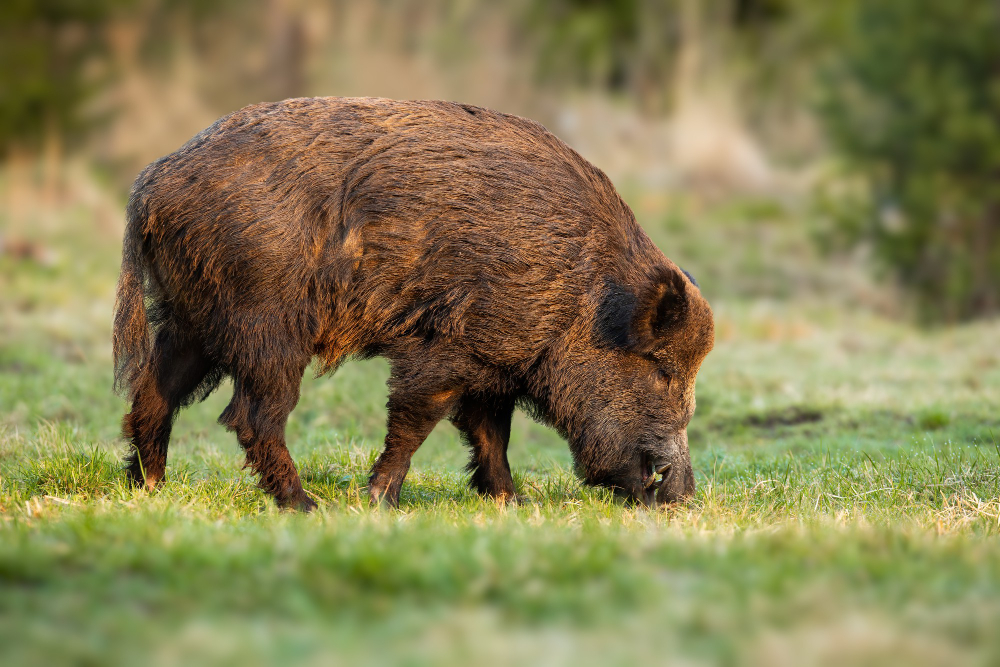The Ultimate Guide to Understanding Wild Hog Behavior for Hunters



Hunting wild hogs is a thrilling experience for many outdoor enthusiasts and conservationists. Shows and stories of these experiences might give you a basic understanding of hog behavior in the wild, but truly comprehending wild hog actions can mean the difference between a successful hunt and returning empty-handed.
Understanding wild hog behavior is crucial, not only for a successful hunt but also for safety. Wild hogs are intelligent, adaptable, and possessive creatures that can be aggressive when threatened or cornered. Here's an in-depth look at the various aspects of wild hog behavior and how hunters can leverage this knowledge.
Wild hogs are known for their omnivorous diet, which includes plants, fruits, small mammals, insects, and even the eggs of ground-nesting birds. Their feeding behavior is quite varied, depending on the availability of food sources in different regions and seasons.
Hogs are opportunistic feeders, often browsing at night and during twilight hours. Acorns and other nuts are a favorite during fall and winter, while crops like corn and soybeans are delicacies year-round. Understanding feeding patterns can help hunters anticipate hog movement and strategically plan their hunts accordingly.
Setting up artificial feeding sites— such as baited traps or automatic feeders—can be an effective method for hunters to attract hogs to a specific area. Strategic placement of these feeding scenarios requires a good understanding of the prevailing wind direction, as hogs rely heavily on their sense of smell.
Wild hogs live in groups known as sounders, typically led by a dominant sow. Sounders can include multiple generations and are quite hierarchical in nature.
A sounder is usually composed of around 20 hogs, but this number can fluctuate dramatically based on food availability, predation, and other environmental factors. The social hierarchy within the sounder is maintained through posturing, vocalizations, and physical aggression, with the dominant sow leading the group to favored feeding areas.
Hogs use a range of gestural and verbal cues to communicate within the sounder and with other groups. These cues can be as subtle as ear movements or as expressive as growls, grunts, and squeals, signalling changes in behavior, imminent danger, or the presence of food.
Breeding season, also known as the "rut," typically occurs in the late fall and early winter. Males, or boars, become particularly aggressive and solitary during this time as they compete for the attention of sows.
The rut causes a spike in hormones in boars. This hormonal surge leads to increased aggression and the scraping of the ground with tusks in displays of dominance. During the rut, boars may also engage in fights, which are often noisy and ferocious.
For hunters, the rut is an important time to understand boars’ movements towards feeding and mating areas. Careful observation of signs like wallowing and rubs can provide clues to nearby boar activity and potential ambush locations.
Wild hogs are wary animals and react to threats in a number of ways, which often depends on the individual’s position in the sounder’s hierarchy and the level of perceived danger.
In response to potential danger, lower-ranking hogs may flee, often with a distinctive s-curve in their tail, while higher-ranking individuals may stand their ground, exhibiting aggressive displays to protect the sounder.
Wild hogs will utilize diverse defensive tactics when confronting an immediate threat. These can include forming a protective circle around juveniles, emitting warning grunts, and rushing a predator head-on with their sharp tusks.
The movements of wild hogs are governed by circadian rhythms and are often indicative of their feeding, breeding, and resting periodicity.
Wild hogs are largely crepuscular, meaning they are most active during dawn and dusk. Their nocturnal tendencies can make them challenging targets for hunters. Understanding and adapting to these movement patterns is crucial for successful hog hunting.
Hog movement patterns also shift with the seasons. They may travel greater distances in search of food and water during dry periods, and feeding times may become more consistent during agricultural seasons affecting crop types and availability.
Wild hogs are highly adaptable and have a wide habitat range that spans from forests and swamps to agricultural land.
While adept in various environments, wild hogs do have preferences. Thick underbrush provides cover and a variety of food sources, making it an attractive habitat. Understanding where they are most likely to be found helps hunters select the best hunting grounds.
Hogs have large home ranges and can travel significant distances. They mark their territories with wallows and rubs and are generally consistent in their movements, especially between feeding and resting areas.
To conclude, understanding wild hog behavior is multifaceted and requires nuanced knowledge. For hunters looking to make the most out of their hog hunting experiences, the following takeaways are essential:
For those interested in wild hog hunts in Orlando, FL, Switchgrass Outfitters offers guided hunting trips with experienced professionals who can help you turn this knowledge into a thrilling and successful hunt. Contact Switchgrass Outfitters today for booking information.